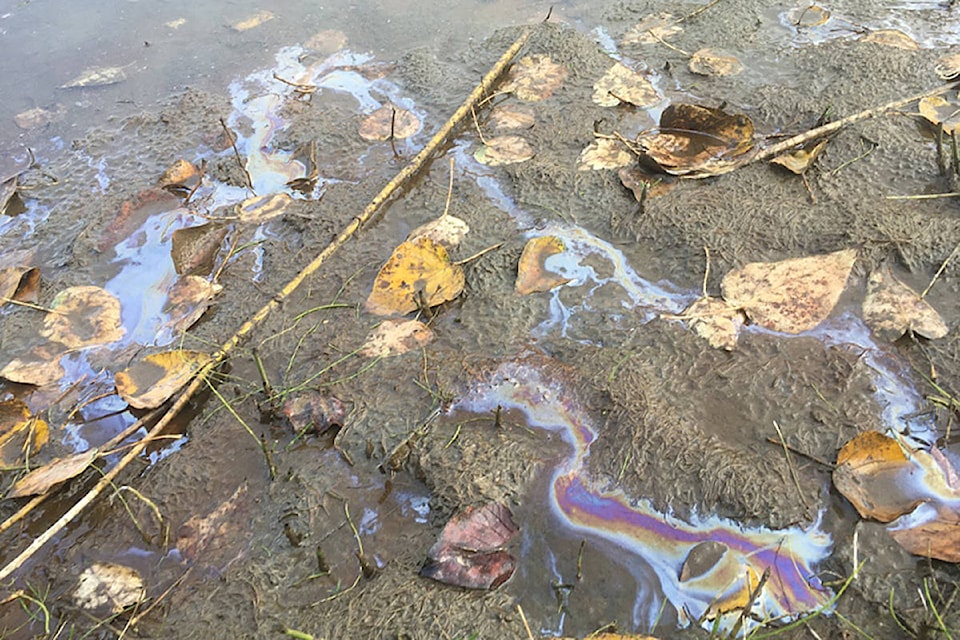An oily substance spotted on Kamloops rivers is caused by a reaction between bacteria and minerals in the water.
City of Kamloops environmental services co-ordinator Emily Lomas called the iridescent substance a “humic It is born, however, of nature.
“Apparently, it’s fairly common around our area,” Lomas said. KTW earlier reported concerns of a Westsyde resident, who spotted the sheen on the North Thompson River and contacted this newspaper with concerns due to its proximity to the Trans Mountain pipeline.
The substance could be seen on a half-kilometre stretch of the river banks between Overlander Drive and Harrington Road in Westsyde.
Trans Mountain said the substance did not originate from its pipeline and an investigation has since confirmed that. Environment and Climate Change Canada said enforcement officers conducted an inspection to determine if the river had been polluted. It worked with the BC Ministry of Environment and Climate Change and the City of Kamloops and determined “there was no evidence indicating that a violation of the Fisheries Act had occurred with respect to the anomalies detected in the North Thompson River.”
Lomas said city staff looked at the area and received a call reporting a sheen on the South Thompson River, as well.
“We’re confident based on our discussion with both the Ministry and Environment Canada that it is a bacterial sheen,” she said.
Petroleum sheen or humic sheen?
A volunteer-driven environmental newsletter based in Texas, called Texas Watch, provides advice for differentiating petroleum and humic sheens.
“When a stick is poked into a bacterial sheen or a stone is dropped into it, the sheen will typically break into small platelets,” the article notes. “In contrast, a petroleum sheen will quickly try to reform after any disturbance. Another difference is odour; a sheen produced by bacteria usually has none, while a sheen caused by a spilled petroleum product may smell like gasoline or diesel fuel.”
